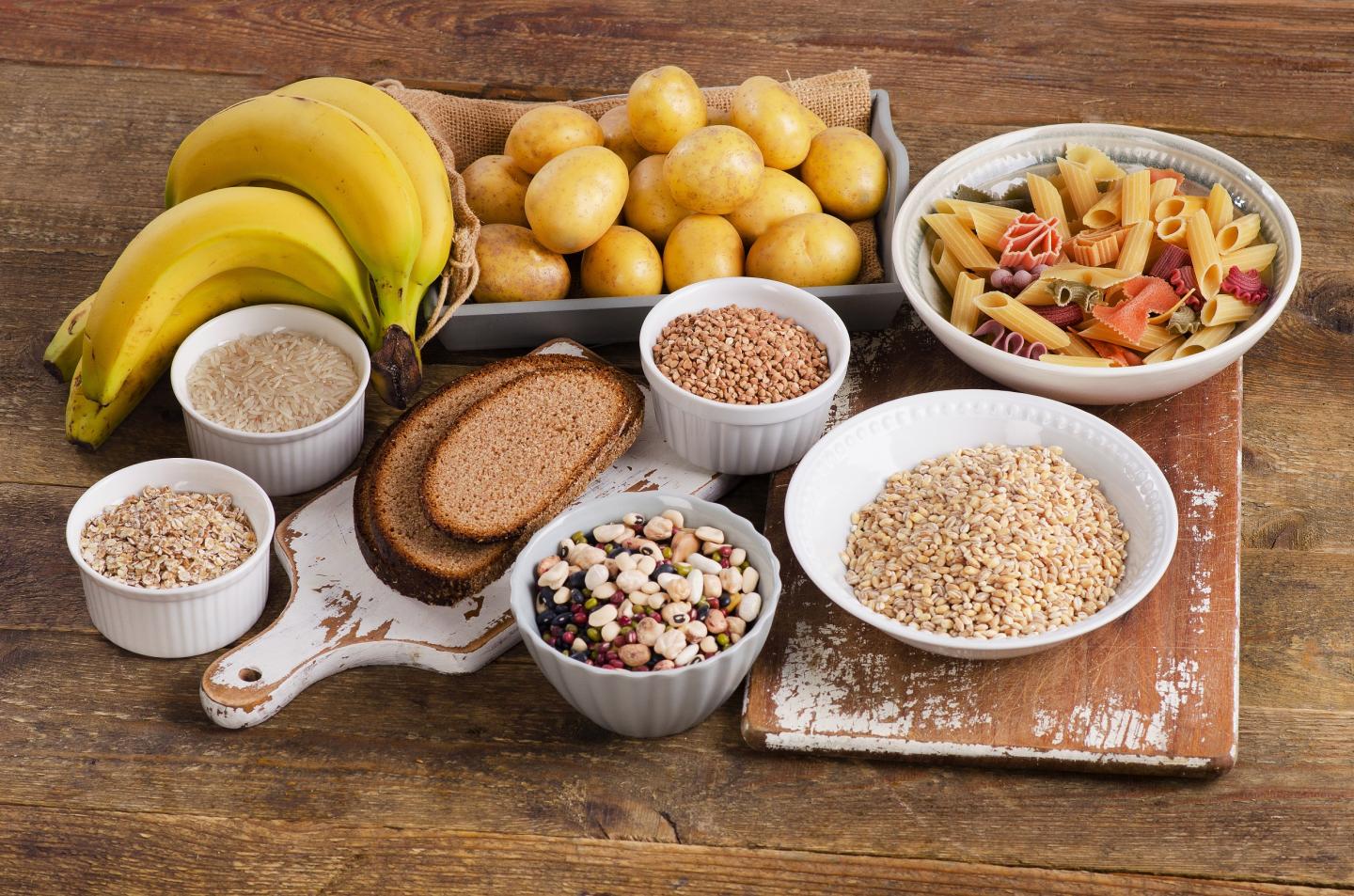Resistant starch is a type of starch that passes through your body without getting digested. Experts say [1] that resistant starch can help prevent a number of health issues. But what’s the point of eating something you can’t digest?

Keeping Your Gut Bacteria Fed with Prebiotics
It’s easy to confuse probiotics with prebiotics, but the difference is simple.
Probiotics are live bacteria that improve your health. They occur naturally in food such as yoghurt or pickles. You may need to take probiotics to improve your digestion or your immune system. Probiotics are also frequently prescribed by doctors to counter the negative effects that antibiotics have on your body’s bacteria.
Prebiotics are food that increases the levels of useful gut bacteria that already live in your body. Specifically, prebiotics are polysacharids that go through the digestive tract but stay intact until reach the colon. Once they’re there, your bacteria will break them down.

There are three types of prebiotics:
- Inulin and other non-starch polysacharids. Natural sources include garlic, onions and chicory.
- Soluble fibers [2]. You can get them by eating blueberries, apples, nuts and beans.
- Resistant starch. Some types of starch are digestible, but resistant starch remains unchanged until it gets to the colon, where it feeds a variety of important bacteria.
You need all three kinds of prebiotics to stay healthy. But resistant starch is the most efficient, and it can keep you safe from a number of diseases.
The Best Sources for Resistant Starch
Starch is a type of carbohydrate. It changes its structure when you cook it, so it’s possible to get starch you can digest from resistant starch.
There are four types of resistant starch, three of these occur in nature.
You can get Type 1 resistant starch from grains, legumes and seeds. It’s inaccessible to your digestive system because it stays in the fibrous cell walls.
Type 2 resistant starch can be found in green bananas and raw potatoes. When you cook these foods, the starch changes and becomes edible. Your best bet when it comes to Type 2 starch is to use food supplements, or flour made from green bananas or plantain.
Type 3 is also called retrograde resistant starch. It forms in cooked potatoes or rice, but only after they have cooled down. You can reheat this type of resistant starch without changing its structure, but only if you stay under 130 degrees. Reheating at a higher temperature will make it digestible again.

The only way to get Type 4 resistant starch is artificially, through various chemical processes.
What Happens When Resistant Starch Gets to Your Gut Bacteria?
When your beneficial gut bacteria break down any type of resistant starch, they create chemicals called short-chain fatty acids. The most important of these fatty acids is butyrate.
Butyrate feeds the cells in your colon directly. Additionally, some butyrate gets absorbed to your bloodstream via the colon cell walls, and eventually it reaches your liver.
Once butyrate enters your circulation, it improves your health in a few different ways, most importantly, it has an impact on your insulin and blood glucose levels.
Why Is Resistant Starch Good For You?
Here is an overview of what resistant starch can do for you:
- It helps keep your digestive system safe from harm.
Resistant starch strengthens the walls of your colon. This means that any toxins you’ve absorbed with food will stay safely in your colon and out of your blood stream.
Additionally, it has an anti-inflammatory effect. People who suffer from inflammatory bowel diseases such as Crohn’s disease can reduce the chance of flare-ups by making sure to take enough resistant starch. But since it gets to your liver, it can help reduce inflammations anywhere in your body.
Anyone who has digestive problems such as diarrhea or constipation can benefit from taking resistant starch regularly. It can help reduce the risk of colorectal cancer as well.

- It reduces your blood glucose levels.
By consuming resistant starch, you can both lower your blood sugar levels and improve your insulin sensitivity.
Insulin sensitivity is very important to your long-term health. If you becomes less sensitive to insulin, your body cannot regulate changes in your blood sugar levels, which can lead to diabetes. It also puts you at increased risk of Alzheimer’s and cardiovascular disease. Issues with blood sugar levels can make obesity a real danger even for people with healthy eating and exercise habits.
Even a small amount of resistant starch can have a huge effect on your body’s reaction to insulin. Research shows [4] that even as little as 15-30 grams of resistant starch can significantly improve insulin sensitivity.
- It can help you lose weight

Compared to regular starch, resistant starch contains significantly fewer calories. And yet, eating it will make you feel full, so it’s a good choice for anyone who is struggling with persistent feelings of hunger. Since you don’t digest it, you can take resistant starch even if you’re trying to avoid other carbohydrates.
Since it decreases the effect that eating has on your blood sugar levels, resistant starch can also help reduce your appetite by affecting your blood stream directly.
Resistant starch also lowers the amount of fat storage in your fat cells. You will eat less and it won’t “stick” to your body – no wonder it’s so popular among people trying to lose weight!
Any Bad Side Effects?
30 grams is a good upper limit for resistant starch. It won’t harm you in larger doses, but increasing your resistant starch intake too suddenly might cause some discomfort, such as bloating.
Overview
The best natural sources for resistant starch are nuts, legumes such as beans, and any type of grain. Cooked and cooled potatoes are a safe choice, so long as you don’t re-heat them at a high temperature. Plantain flour can be a great choice too. There’s also a wide variety of all-natural supplements you can look into.
If you consciously add resistant starch to your diet, you won’t just keep your gut bacteria happy.
It will have a beneficial effect on controlling your weight. You also won’t have to deal with digestive issues and inflammations. Best of all, it can help you avoid the serious complications that come with blood glucose problems.
Hi! We’re Team Neuro, aficionados of all things brain-related, from creativity to working out. With backgrounds in art, science, and athletics, we love delving into all the potentials of the human body.
We also created the world's first sugar-free nootropic caffeine gum that utilizes the effects of caffeine and L-theanine, made to help you optimize your mind — anywhere, anytime. Find out more here.
[1] https://www.healthline.com/nutrition/resistant-starch-101#section4
[2] https://www.webmd.com/digestive-disorders/what-are-probiotics#1
[3] https://www.webmd.com/diet/features/insoluble-soluble-fiber
[4] http://jn.nutrition.org/content/early/2012/02/20/jn.111.152975


























